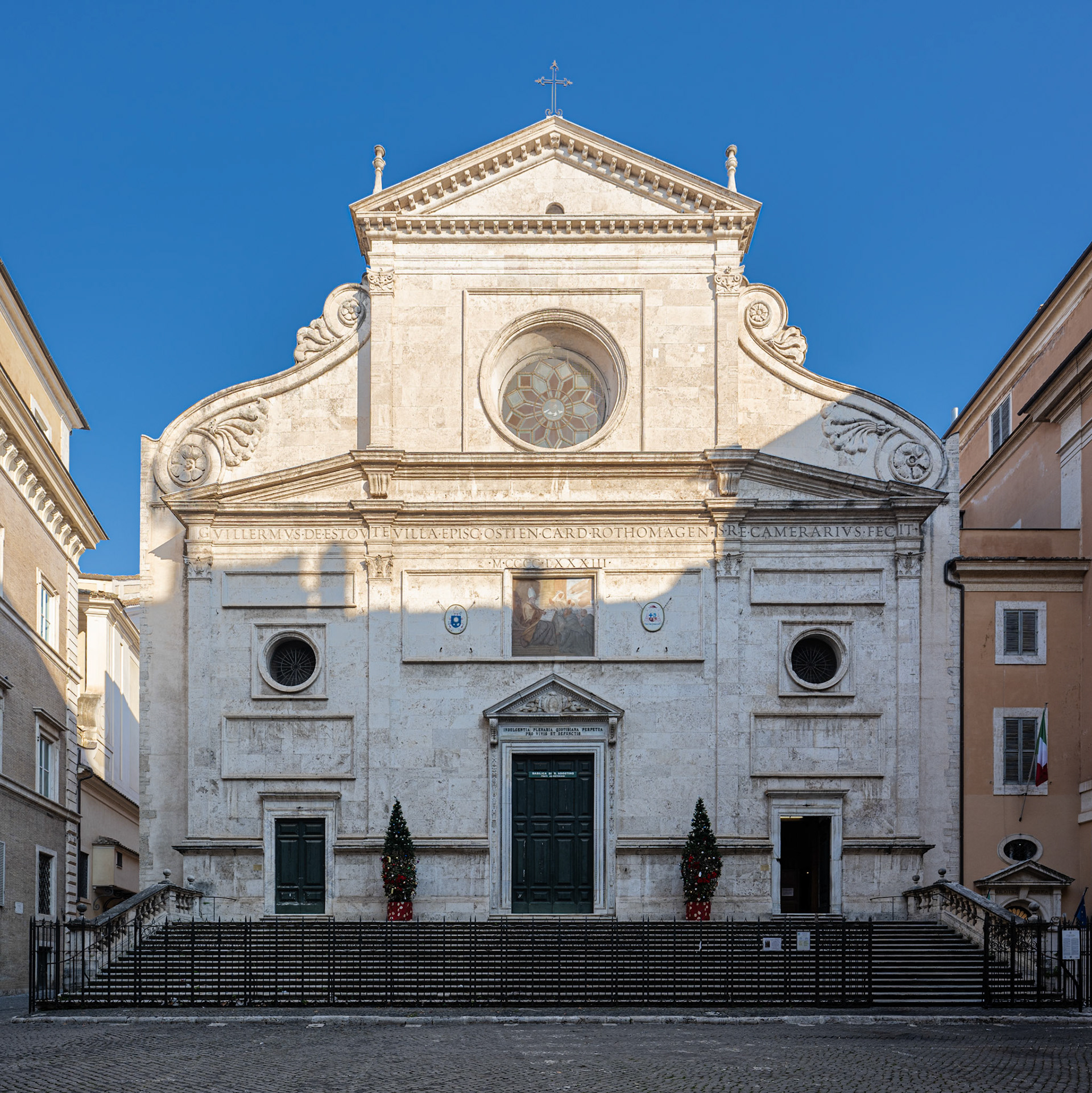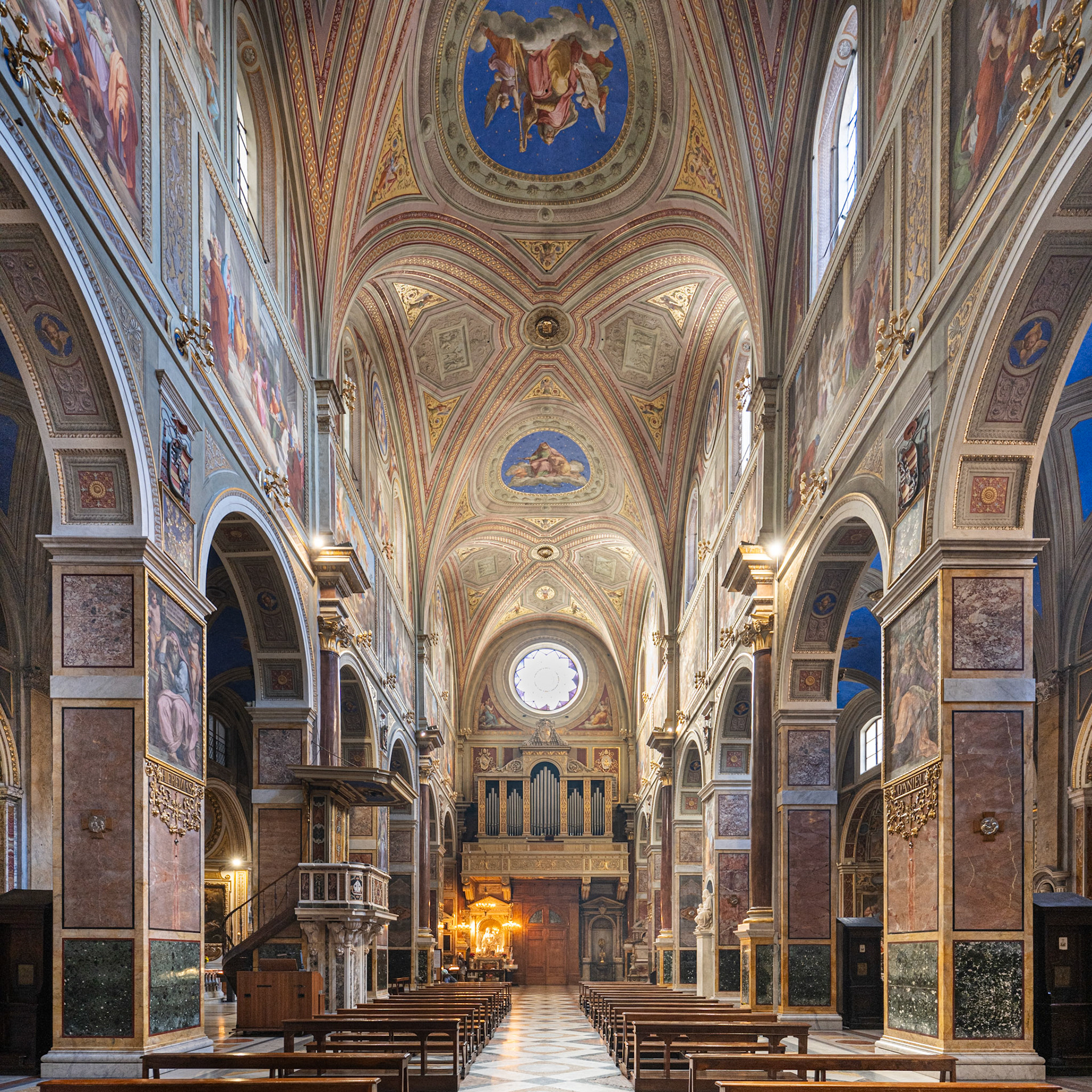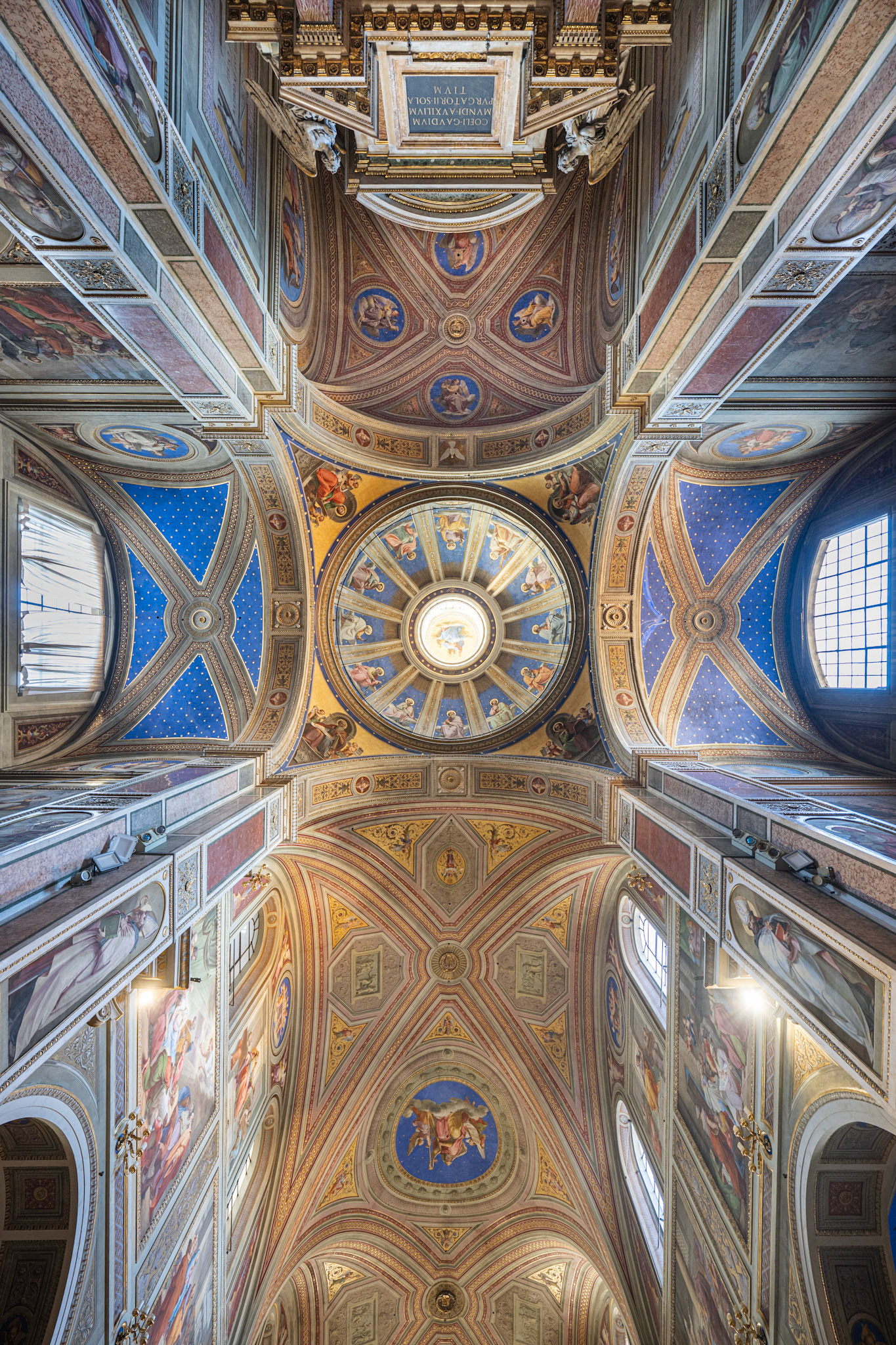The Basilica di Sant’Agostino, located in the historic Campo Marzio district of Rome, was commissioned by Guillaume d'Estouteville, a French Cardinal, in the 1470s to replace an earlier Augustinian church. Its construction was overseen by architect Baccio Pontelli, while the façade was completed by Jacopo di Pietrasanta in 1483. The design showcases an early Renaissance style, characterized by symmetry and classical proportions.
The church’s façade, constructed from travertine stone reportedly taken from the Colosseum, is a simple yet imposing Renaissance design. Its clean lines and balanced proportions are complemented by Corinthian pilasters and a triangular pediment.

Basilica di Sant’Agostino - facade

Basilica di Sant’Agostino - nave
Inside, the church follows a Latin cross plan, with a single nave flanked by side chapels and an elevated transept.

ceiling

ceiling
One of the church’s most famous works is Caravaggio’s Madonna di Loreto, also known as the Pilgrim’s Madonna, located in the Cavaletti Chapel. Completed in 1606, the painting depicts the Virgin Mary holding the Christ Child as two humble pilgrims kneel before them. Caravaggio’s use of chiaroscuro and his naturalistic portrayal of the figures shocked viewers at the time but has since been celebrated as a masterpiece of Baroque art.
The Prophet Isaiah, a fresco by Raphael, was commissioned in 1512 by the Sienese banker Johann Goritz. It reflects Raphael’s early mastery of anatomical precision and vibrant colors, drawing inspiration from Michelangelo’s Sistine Chapel ceiling. Just below the fresco, Madonna del Parto, a marble sculpture by Jacopo Sansovino, depicts the Virgin Mary as a protector of mothers and childbirth.

Cavaletti Chapel, Madonna di Loreto, Caravaggio (1606)

Prophet Isaiah by Raphael and Madonna del Parto by Jacopo Sansovino
You may also like